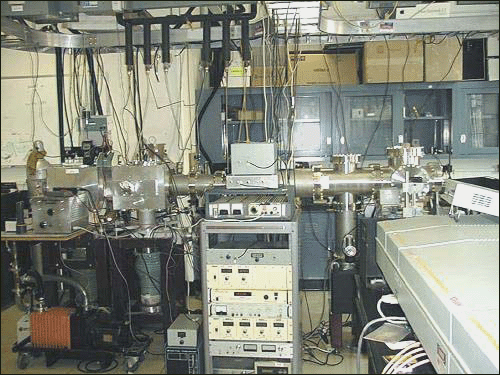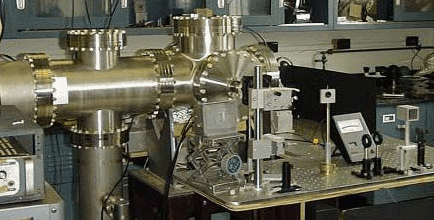|
|
|
REFLECTRON TIME-OF-FLIGHT MASS SPECTROMETER
|
 |
|
Reflectron Time-of-Flight Mass Spectrometer with Electrospray Source |
 |
|
||
|
|
Reflectron Time-of-Flight Mass Spectrometer with Laser Ablation Source |
|
| 1) A metal rod is ablated with
a laser to produce ions. 2) The metal ions react with the desired precursor 3) The ions are cooled to approximately 10 K |
4) Ions are accelerated and
mass selected |
|
The laser ablation source with laser optics in the center of the photo and metal rod on the top.
|
A view of the laser ablation source from the back
|
|
The
end of the mas spectrometer includes the reflectron casing and the dye
laser optics.
|
 |